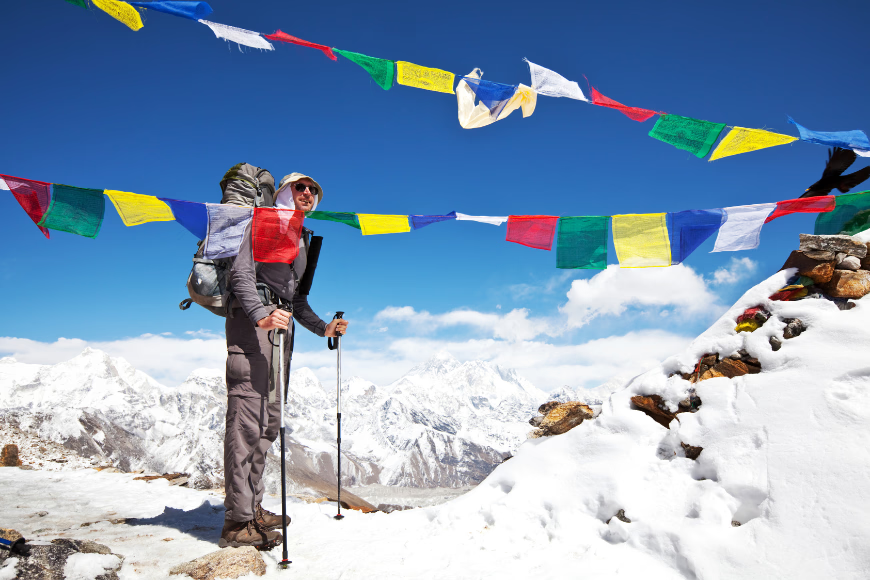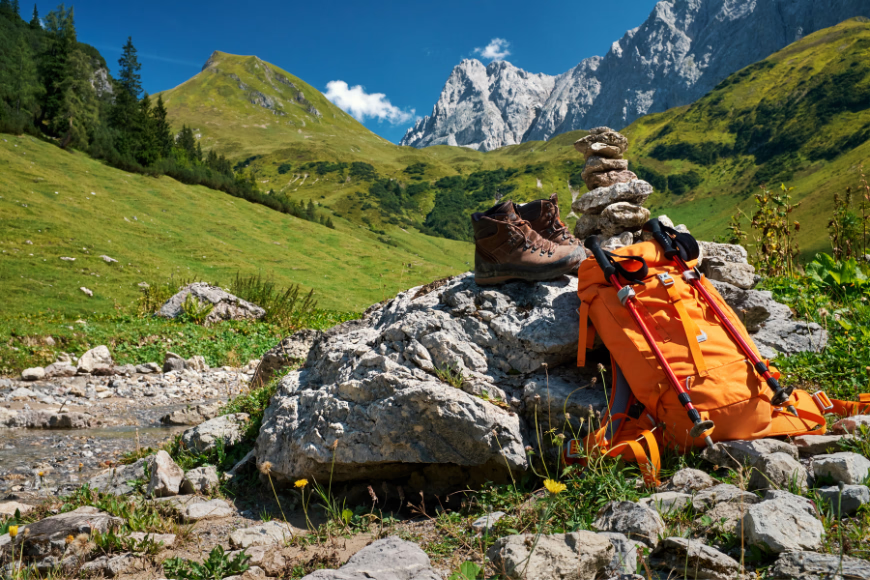Trekking in Nepal: Essential Tips for 30s and 40s Adventurers
Nepal, a land of towering peaks and serene landscapes, offers some of the most exhilarating trekking experiences in the world. For adventurers in their 30s and 40s, trekking in Nepal can be a transformative journey filled with breathtaking views, cultural encounters and personal challenges. Whether you're planning to trek the famous Everest Base Camp trail or explore the lesser-known Annapurna Circuit, here are essential tips to help you prepare for and enjoy your trekking adventure in Nepal.
Why Trekking in Nepal is Ideal for 30s and 40s Adventurers

Physical and Mental Resilience
By the time you reach your 30s and 40s, you likely have a good sense of your physical capabilities and limitations. This age group is generally more prepared for the physical demands of trekking, with a balanced approach to endurance and mental resilience.
Appreciating Cultural Experiences
With a bit more life experience, travellers in their 30s and 40s often have a deeper appreciation for cultural encounters. Trekking in Nepal provides numerous opportunities to interact with local communities, understand their way of life and gain insights into their traditions and practices.
Seeking Meaningful Adventures
This stage of life often brings a desire for meaningful and enriching experiences. Trekking in Nepal offers not only the thrill of adventure but also moments of introspection and connection with nature, which can be profoundly fulfilling.
Essential Tips for Trekking in Nepal
1. Choose the Right Trek

Popular Treks
- Everest Base Camp (EBC): A challenging trek that takes you to the base of the world's highest peak, offering spectacular views of Everest and surrounding peaks.
- Annapurna Circuit: Known for its diverse landscapes, this trek takes you through lush forests, arid deserts and high mountain passes.
- Langtang Valley: A less crowded trek that offers stunning views and rich cultural experiences with the Tamang and Sherpa communities.
Consider Your Fitness Level
Select a trek that matches your fitness level and trekking experience. The Everest Base Camp trek, for example, is more strenuous and requires good physical conditioning, while the Ghorepani Moon Hill trek is shorter and less demanding.
2. Physical Preparation

Start Training Early
Begin your physical preparation several months in advance. Focus on building endurance through activities like hiking, running and cycling. Incorporate strength training to build muscle endurance, particularly in your legs and core.
Practice Hiking with a Pack
Get accustomed to carrying a loaded backpack by practicing with one during your training hikes. This will help your body adapt to the additional weight and improve your stamina.
3. Acclimatisation is Key

Plan Rest Days
Proper acclimatisation is crucial to avoid altitude sickness. Plan rest days in your itinerary to allow your body to adjust to higher elevations. For example, during the EBC trek, take rest days at Namche Bazaar and Dingboche.
Hydrate and Eat Well
Stay hydrated and maintain a balanced diet to support your body’s acclimatisation process. Avoid alcohol and caffeine as they can contribute to dehydration.
4. Pack Smart

Essential Gear
- Good Quality Boots: Invest in a pair of sturdy, well-fitted trekking boots and break them in before your trip.
- Layered Clothing: Pack lightweight, moisture-wicking layers to adjust to varying temperatures. Include a warm jacket for higher altitudes and a rain jacket for sudden weather changes.
- Trekking Poles: These can help reduce the strain on your knees during steep descents and provide stability on uneven terrain.
Travel Light
While it’s important to be prepared, try to pack as light as possible. A heavy pack can slow you down and increase fatigue. Consider hiring a porter to carry heavier items if needed.
5. Health and Safety

Travel Insurance
Ensure you have comprehensive travel insurance that covers trekking activities, medical emergencies and evacuation. Check that your policy includes high-altitude trekking coverage.
First Aid Kit
Carry a basic first aid kit with essentials like band-aids, antiseptic wipes, blister treatment, pain relievers and any personal medications. Include medication for altitude sickness as a precaution.
6. Respect Local Culture

Learn Basic Phrases
Learning a few basic Nepali phrases can enhance your interactions with locals and show respect for their culture. Simple greetings and expressions of gratitude go a long way.
Follow Trekking Etiquette
Respect local customs and traditions. Dress modestly, ask for permission before taking photos of people and support local businesses by purchasing goods and services from them.
7. Environmental Responsibility

Leave No Trace
Practice responsible trekking by following the Leave No Trace principles. Carry out all your trash, minimise campfire impact and avoid disturbing wildlife.
Support Sustainable Tourism
Choose eco-friendly lodges and trekking agencies that support sustainable tourism practices. This helps preserve Nepal’s natural beauty and benefits local communities.
Conclusion
Trekking in Nepal is a rewarding adventure that offers unparalleled natural beauty, cultural richness and personal growth opportunities. For adventurers in their 30s and 40s, it provides a chance to challenge themselves, immerse in new experiences and find tranquility in the majestic Himalayas. By following these essential tips, you can ensure a safe, enjoyable and fulfilling trekking experience. So lace up your boots, pack your bags and get ready to embark on a journey that promises to be one of the most memorable adventures of your life.
Embarking on a trek in Nepal requires preparation, respect for local culture and a spirit of adventure. By choosing the right trek, training adequately and packing smartly, you can navigate the trails of Nepal with confidence and excitement. Remember too acclimatise properly, prioritise health and safety and embrace the unique cultural experiences along the way. Happy trekking!

